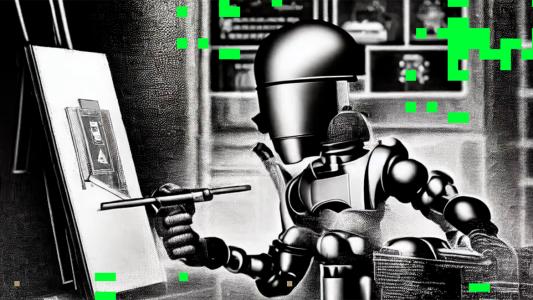A new AI tool has been shown to dramatically improve the efficacy and stability of messenger RNA (mRNA) vaccines — simply by suggesting a different shape for the mRNA sequence in them.
mRNA vaccines 101: mRNA vaccines deliver genetic code (in the form of an mRNA sequence) that tells your cells to make a part of a pathogen, such as the coronavirus’ spike protein. That bit is enough to trigger the immune system to create antibodies that help protect you against infection.
mRNA’s instability and tendency to degrade can affect the efficacy of vaccines.
Developers can start designing an mRNA vaccine as soon as they know which part of the pathogen’s genetic code triggers antibody production (the antigen). That simplicity allows for swift development — with COVID-19, it took just a few days to sequence the coronavirus’ genome, and Moderna had a batch of vaccines ready just 42 days later.
The challenge: Like DNA, mRNA is a form of nucleic acid, and it’s like what you’d get if you sliced DNA’s twisted ladder shape in half lengthwise: one long strand with little half rungs sticking out of it. Unlike DNA, mRNA is incredibly fragile and would quickly fall apart at room temperature, so we need to store and transport mRNA vaccines at ultra-cold temperatures, which makes them harder to deploy.
mRNA’s instability and tendency to degrade can also affect the efficacy of vaccines — we need a sufficient amount of stable mRNA to enter our cells and trigger protein production for the vaccines to protect us.
The stability-optimized mRNA sequence triggered the expression of 3 times as many spike proteins.
What’s new? Just like you can get the same point across using two different sentences, many different mRNA sequences can tell our cells how to make the same antigen — in the case of the coronavirus’ spike protein, there are a whopping ~2.4×10632 options.
Some of those sequences have shapes and structures that make them more stable than others, but sifting through all of the countless options for the most stable sequence would typically be an “insurmountable computational challenge,” according to scientists at Baidu Research.
Not anymore: the Baidu scientists have developed an AI tool called “LinearDesign” that was able to design an ultra-stable mRNA sequence for the coronavirus’ spike protein in just 11 minutes on a standard desktop computer.

When compared to existing mRNA vaccines in mouse tests, the stability-optimized mRNA sequence triggered the expression of 3 times as many spike proteins and up to 128 times more antibodies. The mRNA also survived 6 times longer in test tube assays at body temperature.
“The computational efficiency is really impressive and more sophisticated than anything that has come before,” Dave Mauger, a computational RNA biologist and former Moderna employee, who wasn’t involved in the AI’s development, told Nature.
Looking ahead: LinearDesign is already having a real world impact, aiding the development of SW-BIC-213, a COVID-19 vaccine approved for emergency use in Laos in late-2022.
More therapies could be just on the horizon, too, as Baidu has licensed the technology — now detailed in a paper published in Nature — to French pharmaceutical and vaccine company Sanofi, which is integrating LinearDesign into its pipeline for mRNA-based vaccines and other therapies.
“This research can apply mRNA medicine encoding to a wider range of therapeutic proteins, such as monoclonal antibodies and anti-cancer drugs, promising broad applications and far-reaching impact,” said lead author He Zhang, a software engineer at Baidu Research.
We’d love to hear from you! If you have a comment about this article or if you have a tip for a future Freethink story, please email us at [email protected].






